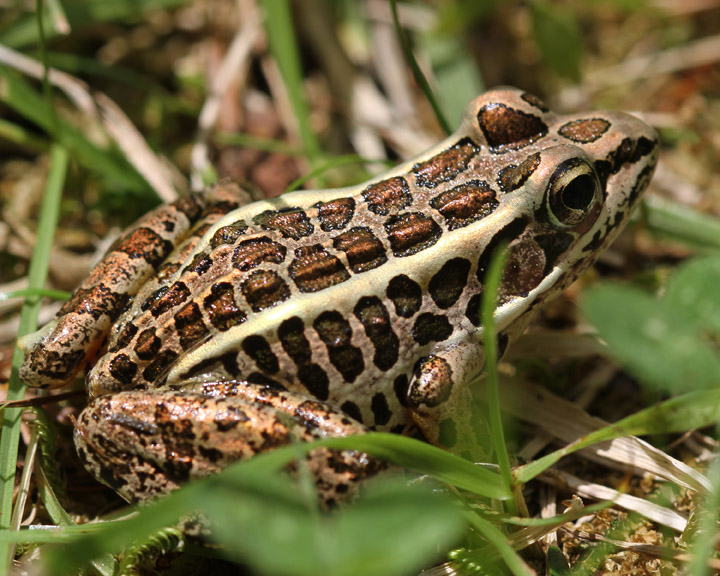The Pickerel Frog (Lithobates palustris) is a medium-sized frog native to North America. Here are some key features and information about the Pickerel Frog:
- Appearance: Pickerel frogs have a distinct appearance with a light-colored, square-shaped spot on their tympanum (ear drum). They typically have a light brown or tan background color with irregular dark spots on their back and legs. The legs may have bright yellow or orange coloration.
- Range: They are found in the eastern United States and parts of Canada, particularly in the Great Lakes region and the northeastern United States.
- Habitat: Pickerel frogs inhabit a variety of environments, including wet meadows, marshes, wooded areas, and the edges of ponds and streams. They are often associated with shallow, slow-moving water.
- Call: The call of the Pickerel Frog is a low, snore-like sound, similar to the quacking of a duck. Their calls are most often heard during the breeding season in spring.
- Behavior: These frogs are semi-aquatic, spending time both in water and on land. They are known for their ability to jump into the water to escape predators. They are primarily nocturnal and are more active during the evening.
- Diet: Pickerel frogs feed on a variety of invertebrates, including insects, spiders, and small crustaceans.
- Breeding: Breeding typically occurs in the spring, and the females lay eggs in shallow water. The eggs hatch into tadpoles, which undergo metamorphosis to become adult frogs.
- Conservation: While not currently listed as a threatened species, Pickerel Frogs, like many amphibians, are susceptible to habitat loss, pollution, and disease. Their well-being is often considered an indicator of the health of the ecosystems they inhabit.
Pickerel frogs are interesting components of their ecosystems and contribute to controlling insect populations. Their unique appearance and vocalizations make them a subject of interest for amphibian enthusiasts and researchers studying local biodiversity.
